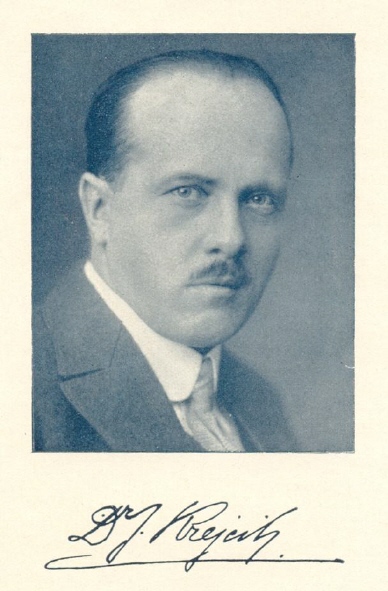
Edward Winter

Josef Krejcik
Should the following game be labelled ‘The Immortal Damiano’ or, perhaps, the only good Damiano ever played?
R. Münz – Josef Emil Krejcik
Vienna, 7 May 1911
Damiano’s Defence
1 e4 e5 2 Nf3 f6 3 Bc4 b5 4 Bxb5 Bb7 5 Nc3 c6 6 Bc4 d5 7 exd5 cxd5 8 Bb5+ Nd7 9 O-O Bd6 10 d3 Ne7 11 Ne2 O-O 12 Ng3 Nc5 13 Be3 Ne6 14 c4 d4 15 Bd2 Ng6 16 Ne4 Bc7 17 c5 Bd5 18 Qa4 Rb8 19 Bd7 Rxb2 20 Bb4 a5 21 Ba3 Re2 22 c6 Rf7 23 Nfd2 Nef4 24 Nc4 Nxd3 25 Ned6 Rxd7 26 cxd7
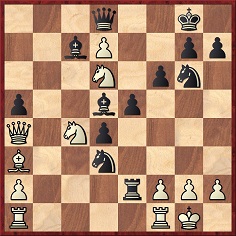
26...Bxg2 27 Qb3 (The Wiener Schachzeitung analyzes 27 Kxg2 Nh4+ and wins.) 27...Bd5 28 Qxd3 Nf4 29 Qg3 Rc2 30 Rfe1 Qxd7 31 f3 Qh3 32 Qxh3 Nxh3+ 33 White resigns.
Source: Wiener Schachzeitung, July-August 1912, pages 199-200.
(357)
One day justice will be done to that remarkable Austrian polymath Dr Josef Krejcik (1885-1957), a recurring name throughout decades of the Wiener Schachzeitung’s existence. From pages 215-216 of the July 1925 issue comes this agreeable little game under the title ‘A New Gambit’ (‘Ein neuartiges Gambit’):
Josef Emil Krejcik – Dr Fr. Schmuttermaier
Reinberg-Dobersberg, 9 August 1924
‘Krejcik Gambit’
1 e4 Nf6 2 f3 e5 3 Bc4 Bc5 4 Ne2 Nc6 5 b4 Bb6 6 a4 Nxb4 7 a5 Bc5 8 c3 Nc6 9 a6 bxa6 10 d4 exd4 11 cxd4 Bb4+ 12 Bd2 Bxd2+ 13 Qxd2 d5 14 exd5 Nxd5 15 Nbc3 Nxc3 16 Qxc3 Qd6 17 Bxa6 Bxa6 18 Rxa6 Kd7 19 O-O Rhe8 20 Rc1 Re6 21 d5 Qxd5 22 Nf4 Qd4+ 23 Qxd4+ Nxd4 24 Nxe6 Ne2+ 25 Kf2 Nxc1 26 Nc5+ Ke7
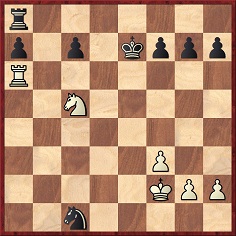
27 Ra1 Resigns. Domination.
The annotations reveal that the ‘stem game’ of this opening was Krejcik-Bourqui (6 January 1924), which had continued: 5...Bxb4 6 c3 Bc5 7 d4 exd4 8 cxd4 Bb4+ 9 Bd2 Bxd2+ 10 Qxd2 d6 11 Nbc3 O-O 12 O-O a6 13 Rab1 b5 14 Bd3 Rb8 15 Rfc1.
Another of Krejcik’s early experiments is mentioned: 1 e4 Nf6 2 Bc4 Nxe4 3 Bxf7+ Kxf7 4 Qh5+ g6 5 Qd5+, etc. (match-game against Gottlieb, March 1922).
(696)
Pages 47-48 of Artige und unartige Kinder der Schachmuse by J. Krejcik (Leipzig, 1925) provide an addition to C.N. 696. Entitled ‘Kürzestes Lehrbuch der Eröffnungslehre’ (‘Shortest Textbook of Opening Theory’), Krejcik’s offering comprised just the following:
‘Krejciksgambit
1 e2-e4 Sg8-f6 2 f2-f3 e7-e5 3 Lf1-c4 Lf8-c5 4 Sg1-e2 Sb8-c6 5 b2-b4 und gewinnt.
Diese Kombination Aljechin-Damiano-Evans ist meine Erfindung und macht jedes weitere Studium überflüssig.’
Translation: ‘This Alekhine-Damiano-Evans combination is my discovery and makes all further study superfluous.’
(3305)
The following game was won by Josef Krejcik:
1 e4 e5 2 d4 exd4 3 Qxd4 Nc6 4 Qe3 g6 5 Bd2 Bg7 6 Nc3 Nge7 7 O-O O-O 8 f4 a6 9 Nf3 f5 10 Bc4+ Kh8 11 Ng5 Qe8 12 exf5 Rxf5 13 g4 Rf8 14 Qh3 h6 15 Rhg1 b5
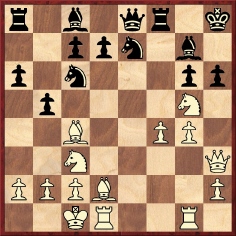
16 Nxb5 axb5 17 Bc3 h5
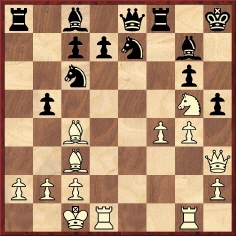
18 Rd6 cxd6 19 gxh5 gxh5 20 Bxg7+ Kxg7 21 Nf7+ Ng6 22 Rxg6+ Kxg6 23 f5+ Kf6 24 Qh4+ Kxf5 25 Qg5+ Ke4 26 Nxd6+ Kd4 27 c3 mate.
We published the score on page 169 of the November 1983 CHESS, stating that it had been played between Josef Krejcik and Konrad Krobot in Vienna, 1908. Our source was pages 30-31 of the January 1909 Wiener Schachzeitung, which specified the occasion as follows: ‘gespielt im Café Viktoria, Wien IV, am 14. February 1908’.
Subsequently, C.N.s 1214 and 1261 pointed out that when the Wiener Schachzeitung repeated the game on pages 224-229 of its August 1924 issue the date was given as 24 February 1909 (see page 229 of that item – although the date 24 February 1908 appeared on page 227); moreover, on page 35 of his book Mein Abschied vom Schach (Berlin, 1955) Krejcik himself put 24 February 1908. This information was given on pages 48-49 of Kings, Commoners and Knaves.
In C.N. 2786 (see page 22 of Chess Facts and Fables) we added that 14 February 1908 was the date supplied on page 100 of Deutsches Wochenschach, 15 March 1908, which took the score from the Neues Wiener Tageblatt. See too page 75 of the 28 February 1909 Deutsches Wochenschach. Krejcik was therefore wrong to put 24 February 1909 on page 16 of another of his books, Artige und unartige Kinder der Schachmuse (Leipzig, 1925). We also mentioned in C.N. 2786 that when the game was published in the chess column of the Berner Heim on 4 April 1908, with notes from Bohemia, Black’s name was rendered as ‘Krobst’.
Further complications are provided now by Richard Forster (Zurich):
‘I can add that Bohemia (Sonntagsbeilage, 8 March 1908, page 27) also had the names as Krejcik and Krobst and stated “gespielt am 14. Feber 1907 in Wien (Café Victoria)”. Perhaps 1907 was a typo, but it adds to the confusion.’
Can any further evidence be found about the correct date and whether Krejcik’s opponent was Krobot or Krobst?
For a modern set of annotations to the game, by Bent Larsen, readers are referred to pages 22-23 of Kaissiber, October-December 2005.
(4490)
Peter Anderberg (Harmstorf, Germany) writes:
‘The Krejcik v Krobot game was published on page 15 of Neues Wiener Tagblatt, 28 February 1908, under the heading “Gespielt im Café Veronika, Wien, XVII., am 14. Febr. 1908”. Black’s name was given as “Konrad Krobot”. Krobot, unlike “Krobst”, is a familiar surname in Austria.’
The name of the Café, Veronika, may be noted. Sources quoted in C.N. 4490 had Viktoria and Victoria.
(4523)
Regarding the discrepancy over Café Victoria and Café Veronika, Michael Lorenz (Vienna) writes:
‘In 1908 there was no Café Veronika in Vienna. The Café Victoria was located in Vienna’s fourth district (Wieden), Taubstummengasse 12.’
Our correspondent has provided the following excerpt from page 61 of Verzeichnis der Abonnenten und öffentlichen Sprechstellen des Telephonnetzes in Wien, (Vienna: K.K. Post- und Telegraphen-Direktion für Österreich, 1908):
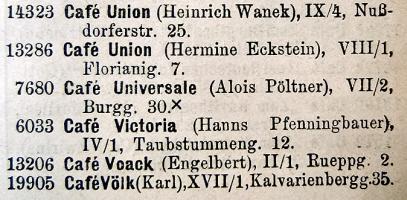
(5463)
In the November 1983 CHESS (page 169) we gave the Krejcik game. Just after publication we happened to see that a more worthy finish would have been the mate in three resulting from either 23 Qg3+ or 23 Qg2+. We give this information here since our letter to the Editor (17 December 1983) was not printed.
(1009)
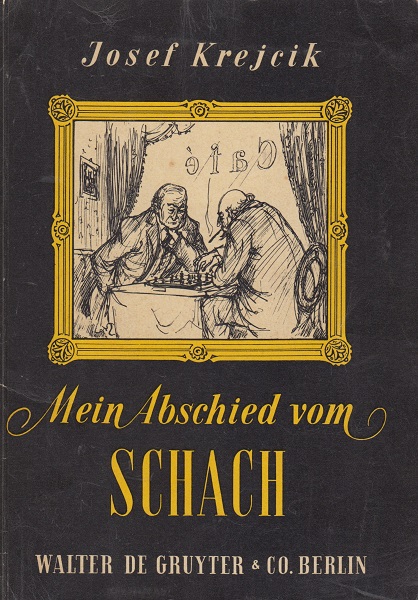
On pages 24-25 of Mein Abschied vom Schach (Berlin, 1955) Josef Krejcik gives the following skirmish which, he reports, has been called ‘the prettiest queen-odds game of all time’:
Josef Emil Krejcik – N.N.
Café Jagerzeile, April 1947
(Remove White’s queen)
1 e4 e6 2 d4 h6 3 Nc3 a6 4 Nf3 g5 5 Bc4 g4 6 Ne5 f5 7 exf5 exf5 (‘Here I announced mate in six moves.’) 8 Bf7+ Ke7 9 Nd5+ Kd6 10 Nc4+ Kc6 11 Nb4+ Kb5 12 a4+ Kxb4 13 Bd2 mate.
How strange that 11...Bxb4+ has been overlooked.
(1300)
From Timothy Whitworth (Cambridge, England):
‘Krejcik seems to have miscounted (it was mate in seven moves, not six) and muffed the finish (it should have gone 11 Na5+ Kb5 12 a4+ Kxa5 13 Bd2+ Bb4 14 Bxb4 mate, a pure one, too). But were these mistakes really made at the board – or at the typewriter afterwards?’
(1355)
From pages 128-129 of Kings, Commoners and Knaves:
We now note that the score was published on page 144 of the May 1962 Chess Review by Walter Korn, who made the following points:a) the actual finish was: 10 c4 b6 (Richard Forster points out to us the line 10…c5 11 b4 cxd4 12 Bf4 and White is winning.) 11 c5+ bxc5 12 Nc4+ Kc6 13 Na5+ Kb5 14 a4+ Kxa5 13 Bd2 mate.
b) ‘Krejcik told me in 1949 that he really played this silly game against a Dr Gruber.’
A strange position allegedly from a game between Alekhine and Bogoljubow (‘Vienna, 1922’) has been published in a number of places (e.g. on page 180 of the Skinner/Verhoeven book on Alekhine). At the Chess History Center website conducted by Richard Forster it has now been revealed, following research by Jack O’Keefe, that it was all a joke/hoax by J. Krejcik, who gave the position on pages 39-40 of his book 13 Kinder Caïssens (Vienna, 1924).
(2463)
From pages 97-100 of Schachjahrbuch für 1915/16 by L. Bachmann (Ansbach, 1917) comes this incident-crowded game:
H.V. Klein – Josef Emil Krejcik
Vienna, June 1915
Ruy López
1 e4 e5 2 Nf3 Nc6 3 Bb5 Nf6 4 d3 Bc5 5 c4 d6 6 Nc3 O-O 7 Bxc6 bxc6 8 h3 Ne8 9 Be3 Bxe3 10 fxe3 f5 11 d4 fxe4 12 Nxe4 Bf5 13 Nf2 e4 14 Nd2 Qg5 15 Qe2 Qxg2 16 O-O-O Qg6 17 Rdg1 Qe6 18 Rg3 Nf6 19 h4 h5 20 Rhg1 Bg4 21 Qf1 Rab8 22 Qg2 d5 23 c5 Qe7 24 Nh3 g6 25 Nf4 Kh7 26 Nf1 Rg8 27 Nh2 Qf7 28 Rf1 Bf5 29 Rg5 Rbf8 30 Qe2 Ng4
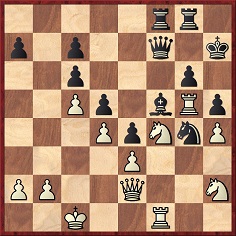
31 Nxg6 Rxg6 32 Rxh5+ Nh6 33 Rfxf5 Rg1+ 34 Kd2 Qxf5 35 Rxf5 Rxf5 36 Kc3 Rf7 37 Kb4 Rfg7 38 Qa6 R1g2 39 b3 Rxh2 40 Qxc6 Rxh4 41 Qxd5 Rf7 42 a4 Rg4 43 a5 Rf3 44 Qb7 Rxe3 45 Qxc7+ Rg7 46 Qf4 Rb7+ 47 Kc4 Rbxb3 48 c6 Rec3+ 49 Kd5 e3 50 c7 Rb2 51 Qe4+ Kg7 52 Qe5+ Kh7 53 Qe7+ Kg6 54 c8(Q) Rxc8 55 Qe6+ Kg5 56 Qxc8 e2
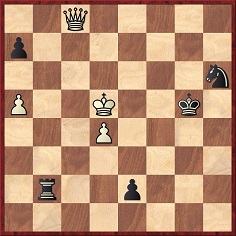
57 Qc1+ Kg4 58 Ke4 Rb7 59 Qg1+ Kh5 60 Qh2+ Kg6 61 Qg3+ Kf7 62 Qf2+ Ke8 63 Kd3 Re7 64 Qxe2 Rxe2 65 Kxe2 Kd7 66 Kd3 Kd6 67 Kc4 a6 68 White resigns.
(2677)
The position below was published in an article by Josef Krejcik on pages 41-42 of the February 1925 Wiener Schachzeitung:
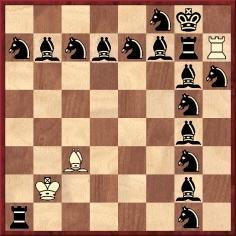
White wins as follows: 1 Rxg7+ Kh8 2 Rxf7+ Kg8 3 Rg7+ Kh8 4 Rxe7+ Kg8 5 Rg7+ Kh8 6 Rxd7+ Kg8 7 Rg7+ Kh8 8 Rxc7+ Kg8 9 Rg7+ Kh8 10 Rxb7+ Kg8 11 Rg7+ Kh8 12 Rxa7+ Kg8 13 Rg7+ Kh8 14 Rxg6+ Kh7 15 Rg7+ Kh8 16 Rxg5+ Kh7 17 Rg7+ Kh8 18 Rxg4+ Kh7 19 Rg7+ Kh8 20 Rxg3+ Kh7 21 Rg7+ Kh8 22 Rxg2+ Kh7 23 Rg7+ Kh8 24 Rxg1+ Kh7 25 Rg7+ Kh8 26 Kxa1 Nh7 27 Rg6+ Nf6 28 Rxh6+ Kg7 29 Rxf6.
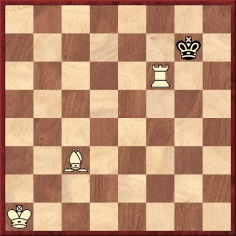
This composition was also given by Krejcik on pages 41-42 of his book Artige und unartige Kinder der Schachmuse (Leipzig, 1925).
(3312)
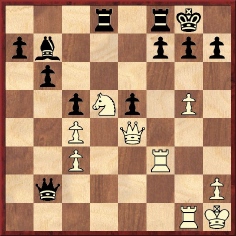
White to play and win
At first glance it may appear that White can win at once with any of the following:
However, all these standard mating combinations are impossible because of the pin on the a8-hl diagonal, and the winning course is therefore the prosaic 1 Ne7+ and 2 Qxb7.
The position was discussed in C.N.s 741 and 796 (see page 1 of Kings, Commoners and Knaves), being taken from an article on chess blindness by Josef Krejcik on page 14 of the March 1923 Wiener Schachzeitung. Krejcik stated that the position had occurred in a game played by him, as White, against a well-known grandmaster in 1907, and he gave more or less the same text on pages 16-17 of his book 13 Kinder Caïssens (Vienna, 1924).
Here, though, we add a complication. On pages 189-191 of How to Play Chess Like a Champion (New York, 1956) Fred Reinfeld discussed a similar position:
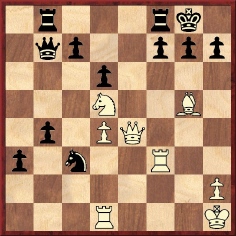
Reinfeld stated that this position arose in ‘a game played by two Viennese amateurs many years ago’ and that Maróczy was a spectator. White could win a pawn with 1 Nxc3 bxc3 2 Qxb7 Rxb7 3 Rxc3 but, Reinfeld said, would have difficulty in winning and therefore had the idea 1 Ne7+ Kh8 2 Qxh7+ Kxh7 3 Rh3 mate. Then White realized that the rook was pinned, but at this point Maróczy exclaimed ‘Magnificent’. Consequently, White looked for a finesse and found 3 d5 Qc8 4 Rd4 g6 5 Bf6 g5 6 Rdd3 g4 7 Rd4 Ne4 8 Rxe4 Qf5 9 Rh3+ gxh3 10 Rh4+ Qh5 11 Rxh5 mate.
Reinfeld then wrote:
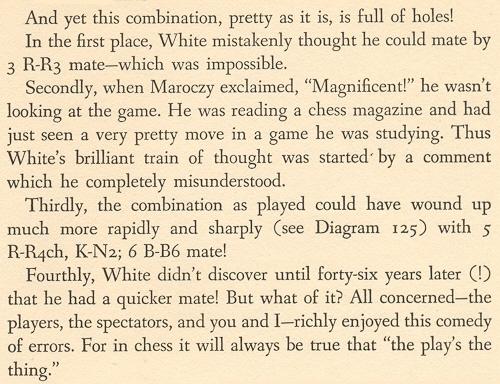
What was Reinfeld’s source for this story?
(4888)
Peter Anderberg points out that Reinfeld’s account is a summary of an article by Josef Krejcik entitled ‘Ein einmaliger Partieschluß’ on page 179 of the 11/1953 Schach-Echo. Krejcik stated that he won the game from Jakob Bendiner in March 1907 and that Maróczy’s comment ‘magnificent!’ (‘prächtig’) was prompted by a problem of Pauly’s in the Deutsches Wochenschach. Page 212 of the 13/1953 Schach-Echo reported that several readers had noted the faster mate 5 Rh4+ Kg7 6 Bf6.
We cannot explain why Krejcik gave two different positions or why, on page 14 of the March 1923 Wiener Schachzeitung, he described his opponent as ‘a well-known grandmaster’.
(4898)
A number of books say that Krejcik won the following game in 1921:
1 e4 d5 2 Nf3 dxe4 3 Ng5 Qd5 4 d3 exd3 5 Bxd3 Qxg2 6 Be4 Resigns.
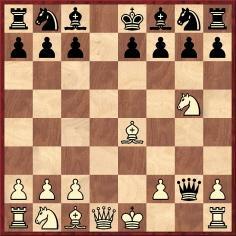
See, for instance, page 103 of Assiac’s Adventure in Chess (London, 1951), although it stated that ‘Krejzick’ defeated ‘master Takasch’ in 1921. The same spellings and date appeared on page 102 of Pour mieux jouer aux échecs by Maurice Beaucaire (Paris, 1967).
Krejcik himself gave the game as one of a pair on pages 25-26 of Mein Abschied vom Schach (Berlin, 1955):
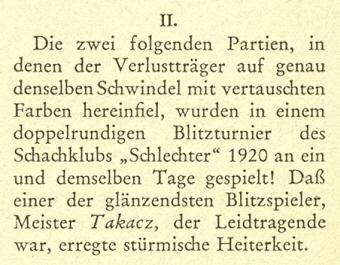
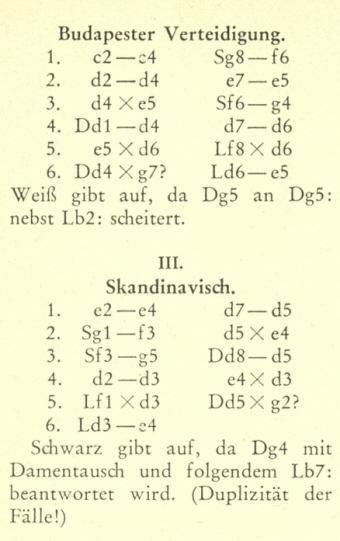
(6681)
C.N. 1050 (see pages 9-10 of Chess Explorations) gave this position from a fast game (Krejcik v N.N., occasion unknown):
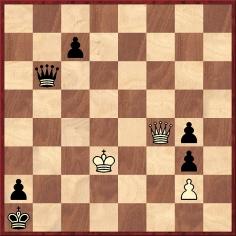
1 Qc1+ Qb1+ 2 Kd2 c6 3 Kd1 c5 4 Kd2 c4
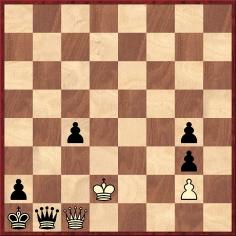
5 Ke2 c3 6 Kd1 c2+ 7 Kd2 Qxc1+ 8 Kxc1 stalemate.
John Nunn (Chertsey, England) points out that the position appears as a study (1923, ‘source unknown’) in the latest van der Heijden study database.
What more can be discovered about the position? At the moment we have only the source specified in C.N. 1050, i.e. page 231 of the August 1924 Wiener Schachzeitung:
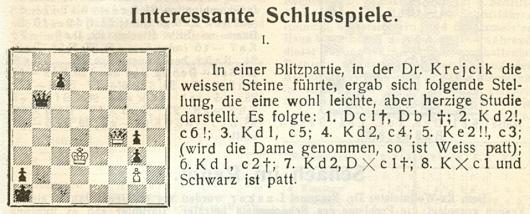
(7172)
On page 195 of The Art of Positional Play (New York, 1976) Reshevsky agreed with the remark regularly ascribed to Teichmann (see C.N. 8738), ‘Chess is 99% tactics’.
An addition on the same theme comes from an article entitled ‘Der neue Bilguer’ by Josef Krejcik on pages 230-232 of the August-September 1913 Wiener Schachzeitung:
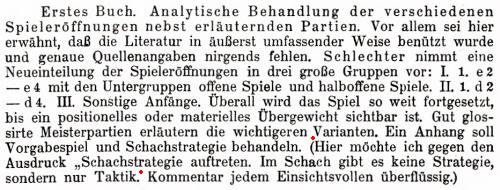
The marked passage states:
‘Here I wish to speak out against the term “chess strategy”. In chess there is no strategy, but only tactics.’
(8787)
From page 191 of The Even More Complete Chess Addict by Mike Fox and Richard James (London, 1993):

The phrase ‘according to Chess’ takes the reader nowhere.
The following is on page 12 of Josef Krejcik’s book Mein Abschied vom Schach (Berlin, 1955):
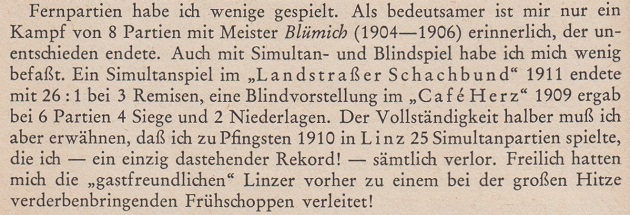
Krejcik states that his hosts had induced him to drink alcohol before the exhibition but places the performance at Whitsun (zu Pfingsten). That undermines the ‘worst birthday present in chess history’ claim, given that he was born on 22 January 1885.
Can information on the display be found in any 1910 publications?
Regarding poor results in simultaneous exhibitions, see too C.N. 2816 (on page 71 of Chess Facts and Fables) and C.N. 6451.
(11000)
Peter Anderberg notes pages 36-37 of Krejcik’s book Artige und unartige Kinder der Schachmuse (Leipzig, 1925), which refers to an 11-board simultaneous display (Whitsun, 1910) on peg chess sets (11 losses):
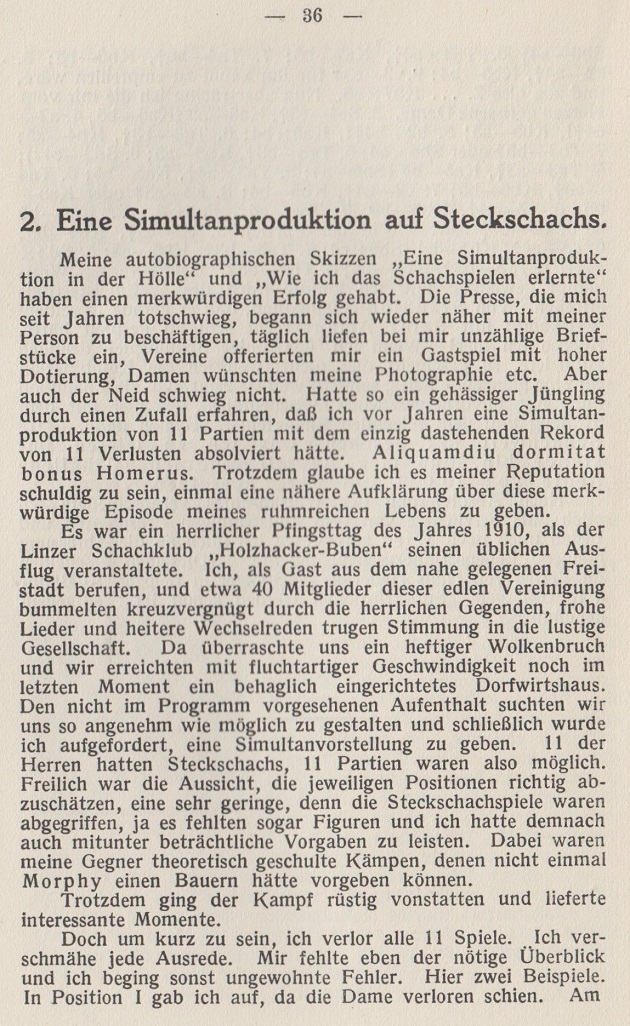
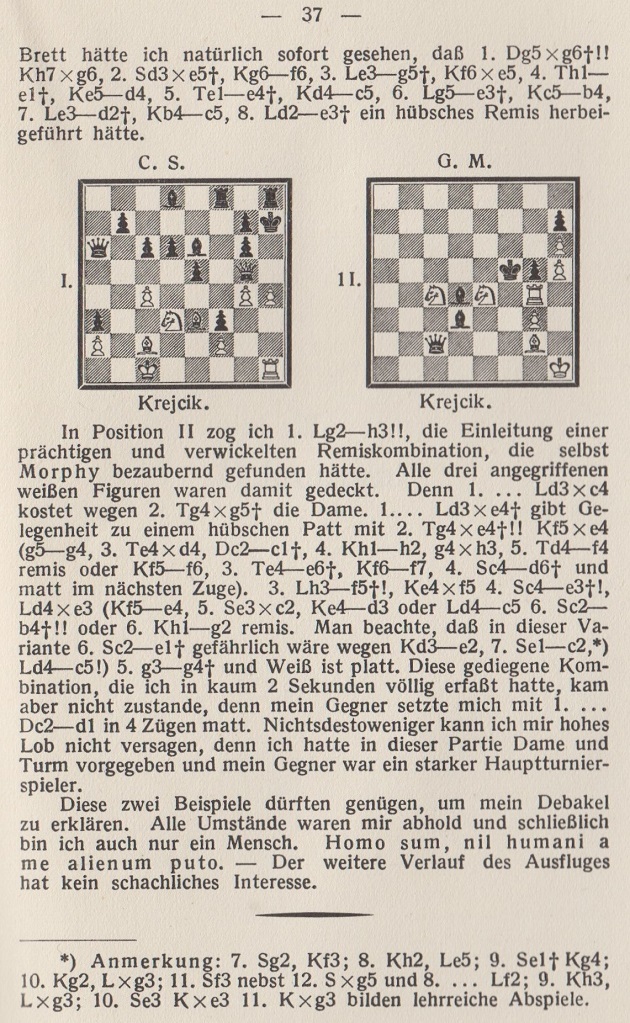
Our correspondent remarks:
‘This text is part of the section “Aus meinem Leben: Dichtung” (“From my Life: Poetry” ), so the entire story seems to be fictitious.’
(11006)
Harry Golombek’s review of Mein Abschied vom Schach on pages 323-324 of the November 1955 BCM:


Since Golombek singled out the ‘portraitures’, the full set is shown here, on pages 18-22 of Krejcik’s book:
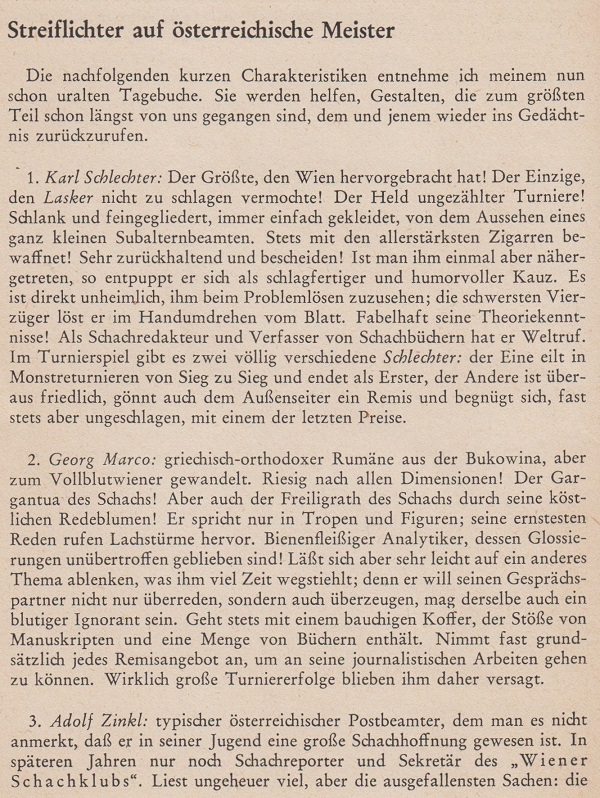
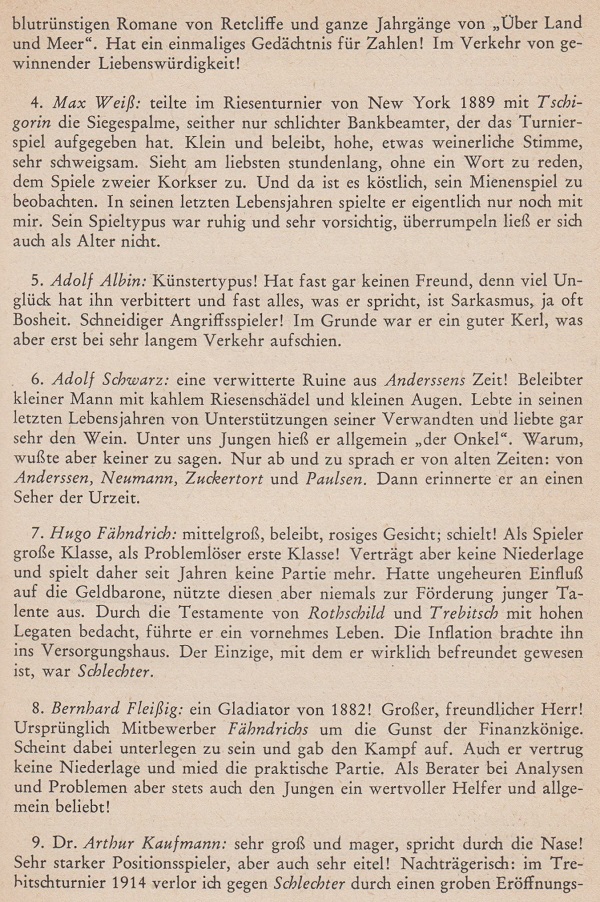
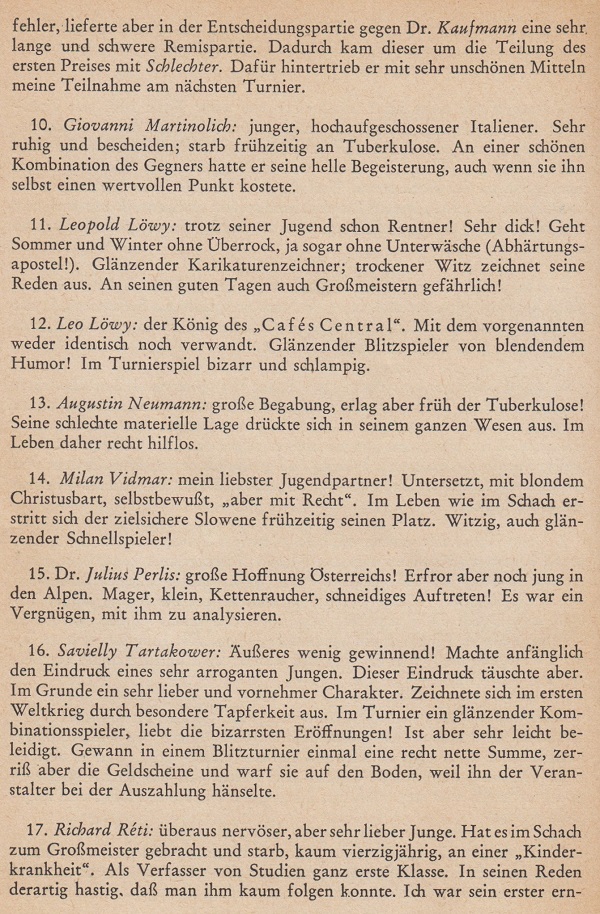
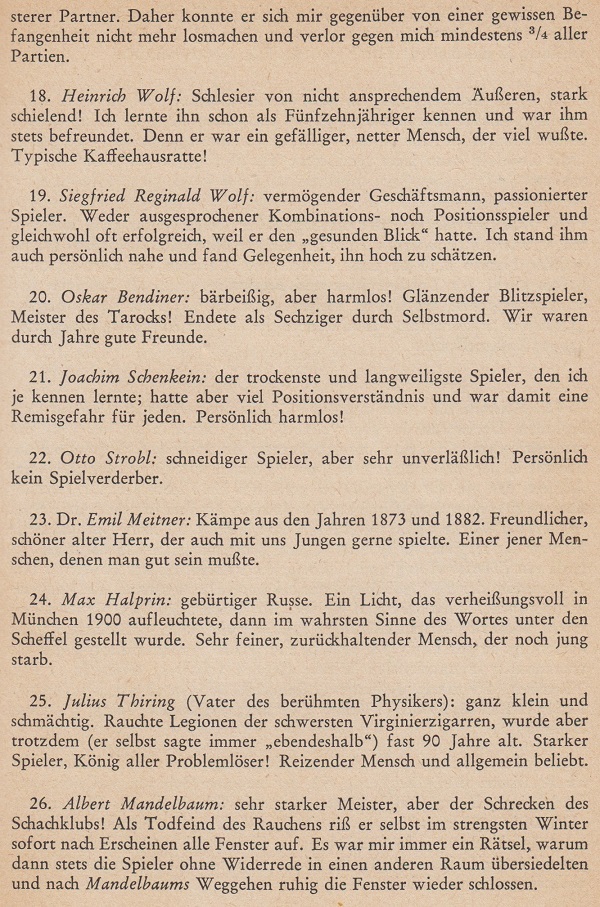
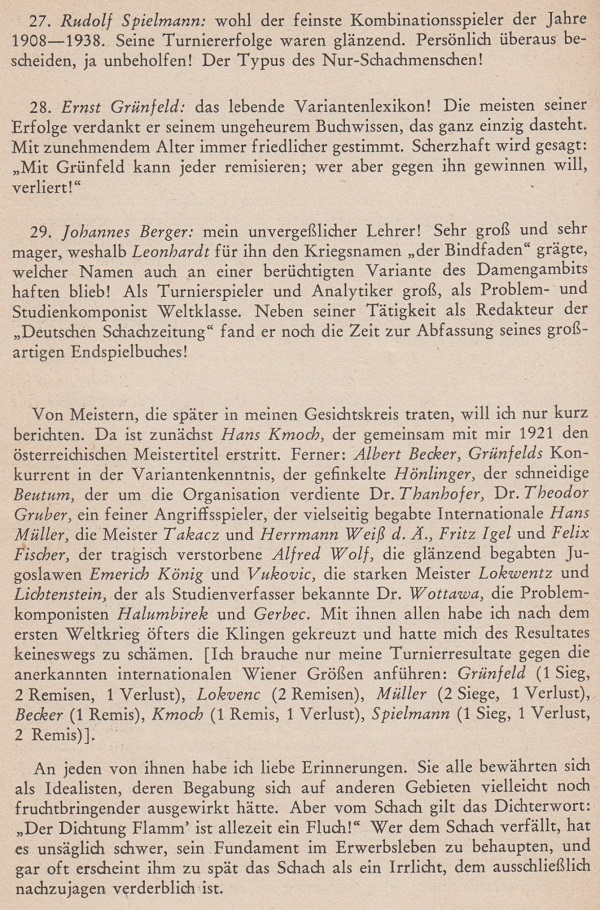
(11012)
To the Chess Notes main page.
To the Archives for other feature articles.
Copyright: Edward Winter. All rights reserved.